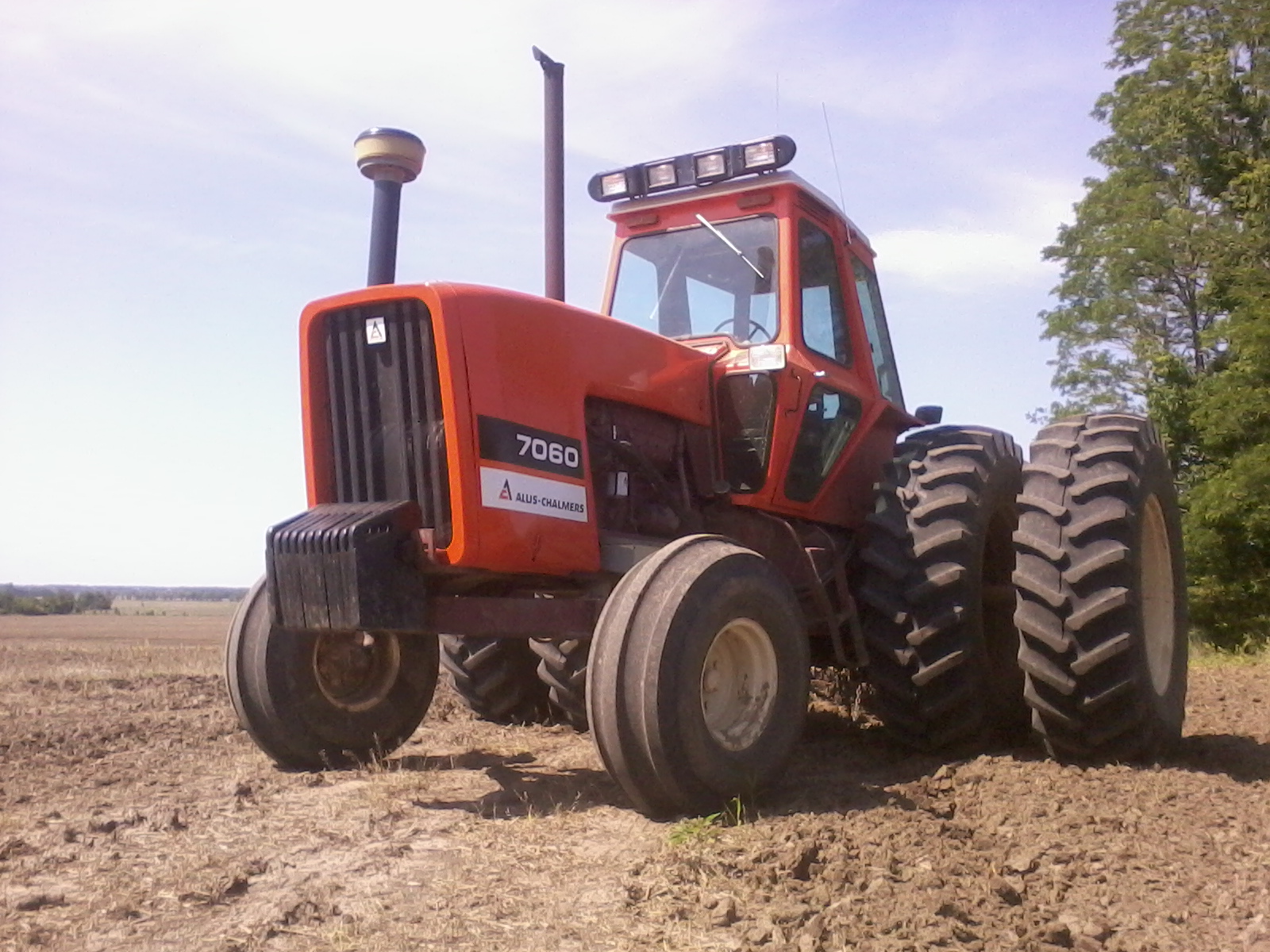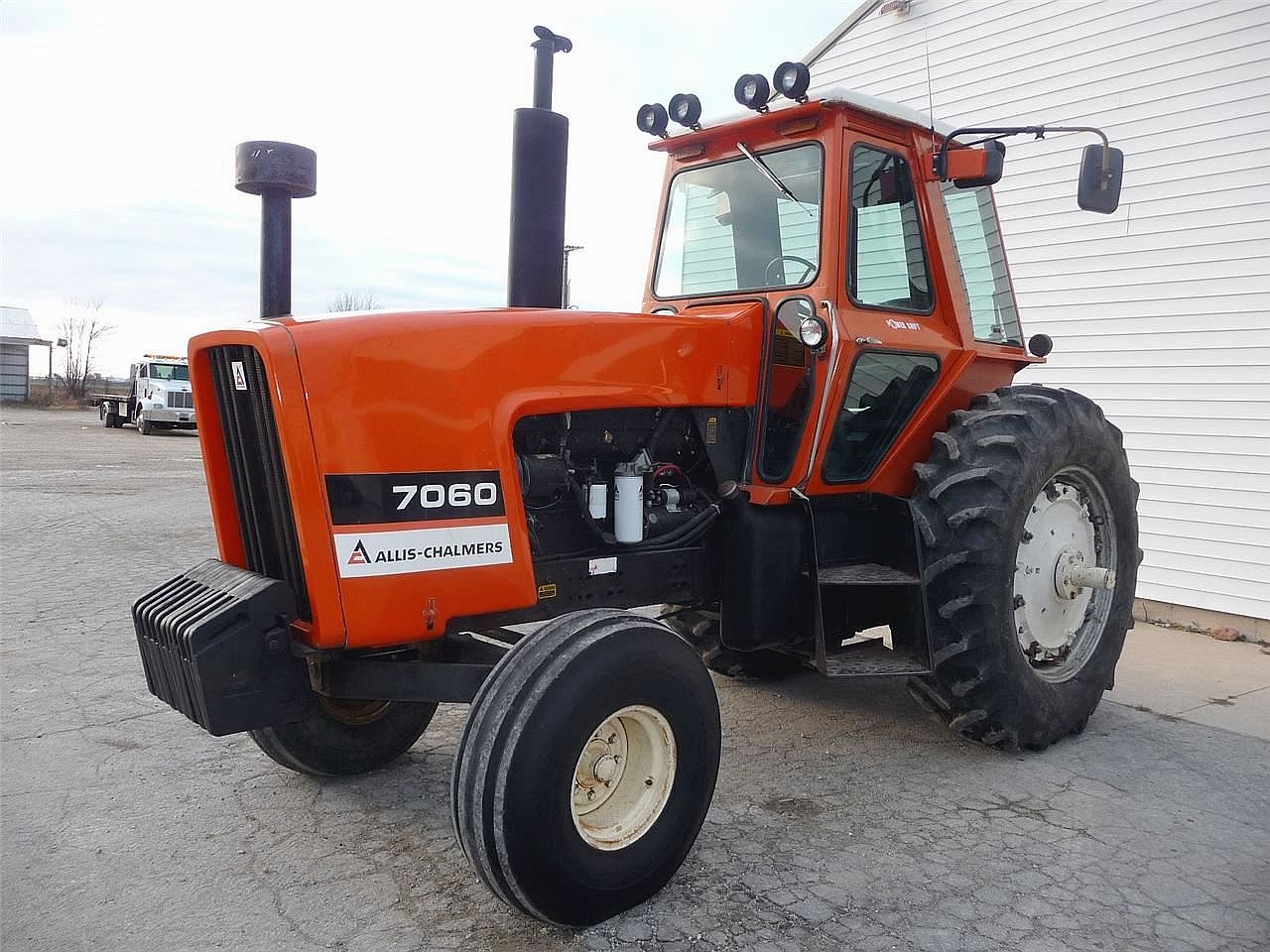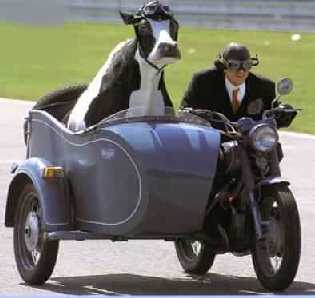| Author |
 Topic Search Topic Search  Topic Options Topic Options
|
orangepower 
Silver Level

Joined: 22 Nov 2009
Location: swohio
Points: 96
|
 Post Options Post Options
 Thanks(0) Thanks(0)
 Quote Quote  Reply Reply
 Topic: soybeans Topic: soybeans
Posted: 15 Feb 2011 at 8:42pm |
|
was wondering the most profitable way to raise beans, I always follow my soil test info, but I hear of others not fertilizing at all, just liming, after corn, using the carry over from the corn, also heard of people never fertilizing and using some kind of soap? anyone heard of this ? How do you work your crop rotations to benefit you bottom line, corn beans wheat? thanks for replies.
|
|
45 diesel puller, 45 gas puller, ca puller
|
 |
|
Sponsored Links
|
|
 |
7060 
Orange Level


Joined: 16 Sep 2009
Location: Missouri
Points: 1148
|
 Post Options Post Options
 Thanks(0) Thanks(0)
 Quote Quote  Reply Reply
 Posted: 15 Feb 2011 at 10:21pm Posted: 15 Feb 2011 at 10:21pm |
|
We usually just use the carry over on corn. We do soil tests on some ground. Our beans we dont spread fertilizer on, but Im not saying it wouldnt pay for itself. We haven't had very good luck at all on double crop beans on wheat, almost money ahead to get the beans in early rather than wait till late june after the wheat is cut.
|
 |
Dipstick In 
Orange Level


Joined: 11 Sep 2009
Location: Remington, In.
Points: 8602
|
 Post Options Post Options
 Thanks(0) Thanks(0)
 Quote Quote  Reply Reply
 Posted: 15 Feb 2011 at 10:31pm Posted: 15 Feb 2011 at 10:31pm |
|
I retired from farming at the end of 1993. But I always applied two years of fertilizer to corn stalks and then chiseled it and any lime that was needed. I drilled my beans. You need plenty of potash and also lime, use your soil tests and follow your suppliers reccomendation. As long as ph and K are in line there is no magic bullet that you need unless you live in a manganese deficlient area. I would run my Duetz-Allis 385 no-til planter in the bean stubble with corn seed for the next year. Boy, that was nice being able to see without those big dust clouds following you or engulfing you. The best tool I ever bought was a chisel plow very closely followed by the 385 planter. If I think about it I might reverse that order. Using no-til one year and chiseling the next my yields crept slowly up and so did the profit.
|
|
You don't really have to be smart if you know who is!
|
 |
Ben (MI) 
Orange Level


Joined: 02 Jun 2010
Location: SW Lower MI
Points: 770
|
 Post Options Post Options
 Thanks(0) Thanks(0)
 Quote Quote  Reply Reply
 Posted: 16 Feb 2011 at 7:04am Posted: 16 Feb 2011 at 7:04am |
Orangepower,
I think a lot depends on your soil type. My guess in SW Ohio you are in some pretty heavy clay type ground. My ground is mostly sandy loam with heavier spots here in SW Michigan. I have been farming on my own for about 20 years, 50 to 100 acres evenly split between corn and soybeans, rotating every year. Rotation is key to maximizing fertility and diversity in chemical use. On my beans I fertilize with potash to the soil test-except for two years ago when potash was $800/ton. I am on 40 bushel bean ground in a good year so I have to weigh the economics at that price, on beans at least. Of course I had to make it up the next year but at $500/ton. I started out moldboard plowing then switched to chisel plowing after about five years. I am now going into my third year of no tilling. I have planted in 15” and 30” rows-last year I had my best soybean yield ever, planted in 30” rows. I would like to drill in 15” rows but for a 1 or 2 bushel gain per acre I can’t justify the cost of owning or renting a drill. Also, disease is more prevalent, at least here, in narrower rows so some of our big farmers are going back to 30” rows. Also an important consideration is seeding rate, some research shows many farmers over populate their beans. Finally, I would suggest using the OSU extension website for more info. I use info from many university extensions in my decision making process, including MSU, OSU, Purdue and Iowa State. I could talk about his all day, but I think I’ll stop-if I can help please PM me. Good luck.
|
 |
Byron WC in SW Wi 
Orange Level


Joined: 11 Sep 2009
Location: Wisconsin
Points: 1635
|
 Post Options Post Options
 Thanks(0) Thanks(0)
 Quote Quote  Reply Reply
 Posted: 16 Feb 2011 at 7:22am Posted: 16 Feb 2011 at 7:22am |
|
Input costs for smaller guys are more than for bigger guys. You get charged the same rental fee on equipment for fewer acres and your price per ton of fertilizer is higher because your volume is lower. Some guys through tons of inputs at things hoping for super duper yields. I'm no expert but I think how the weather behaves during critical times of the growing season has more impact on yield than inputs. You could put all the inputs in you want but if no rain or warmth then your done. So, I limit my inputs which limits my risk. I'm in 40 bpa ground for beans to so increasing my inputs won't get me to 80 bpa anyway. So, if you follow all that I say limit your risk by limiting your inputs. Do a lot of prayer for weather and in the end you'll be ahead.
I did the same thing Ben did. When prices were nuts for potash I skipped that year but then put it on again last year after it came down.
High yield doesn't always equal high profits.
|
 |
bakwoodsfarm 
Orange Level

Joined: 02 Sep 2010
Location: Woodleaf,NC
Points: 511
|
 Post Options Post Options
 Thanks(0) Thanks(0)
 Quote Quote  Reply Reply
 Posted: 16 Feb 2011 at 6:42pm Posted: 16 Feb 2011 at 6:42pm |
|
I only plant beans in the fields that Orchard grass has played out, so I plant early and fertilize with Grasshopper liquid (3-18-42) when I apply round-up middle of the season. I also use the Grasshopper on my hay fields with great results. Last year I had a respectable 45bpa average. ALWAYS KEEP YOUR PH RIGHT
|
 |
Gerald J. 
Orange Level

Joined: 12 Sep 2009
Location: Hamilton Co, IA
Points: 5636
|
 Post Options Post Options
 Thanks(0) Thanks(0)
 Quote Quote  Reply Reply
 Posted: 16 Feb 2011 at 8:17pm Posted: 16 Feb 2011 at 8:17pm |
|
There are daily discussions on growing soybeans on New AgTalk, crop talk at:
http://talk.newagtalk.com/forums/forum-view.asp?fid=3
Few have found a benefit to soysoap and many other foo foo juices are discussed. Sometimes the skeptical and the vendors end up at the opposite sides of the arguments. My test is to read the MSDS for a miracle product to see what it has for ingredients. Most have a little N and K or P and K and very little else. Some are cleaner than well water and likely drinkable.
Planters tend to get better soil contact for the seed than drills, but sometimes beans aren't particular.
Fertilzing for corn and leaving left overs for beans really only works when there's excess for the corn and the corn didn't take advantage of the extra. There is a little bit of evidence that its worth the extra cost of application to put down P and K especailly for the beans in the bean year.
There are many arguments on bean population. One ISU guru who now is with Syngenta was pushing low populations and early planting. Way too low and way too early in my view in ground that tends to crust and have May frosts. The guru for the Iowa Soybean Association noted last year that traditional population around 160K yielded more beans than smaller populations, but not very much. 40K extra seed produced only a bushel more beans and at $40 or 50 a sack that didn't pay well.
Gerald J.
|
 |
orangepower 
Silver Level

Joined: 22 Nov 2009
Location: swohio
Points: 96
|
 Post Options Post Options
 Thanks(0) Thanks(0)
 Quote Quote  Reply Reply
 Posted: 16 Feb 2011 at 9:31pm Posted: 16 Feb 2011 at 9:31pm |
|
thanks for the opinions, I have had 42 bu beans and 16 bu beans on the same farm, just depended on the rain, just wanted to get the best bang for the buck, thinking about going all corn this year, but so expensive.
|
|
45 diesel puller, 45 gas puller, ca puller
|
 |
Dave in il 
Orange Level


Joined: 22 Sep 2009
Location: Manville Il
Points: 1748
|
 Post Options Post Options
 Thanks(0) Thanks(0)
 Quote Quote  Reply Reply
 Posted: 17 Feb 2011 at 8:33pm Posted: 17 Feb 2011 at 8:33pm |
|
You might consider a rotation of 1/3 beans on corn stalks, 1/3 corn on bean ground, 1/3 corn on corn ground. Even with the higher costs corn has more profit potential and this rotation let's you plant more corn but limits your amount of corn on corn.
|
 |
Gerald J. 
Orange Level

Joined: 12 Sep 2009
Location: Hamilton Co, IA
Points: 5636
|
 Post Options Post Options
 Thanks(0) Thanks(0)
 Quote Quote  Reply Reply
 Posted: 17 Feb 2011 at 10:56pm Posted: 17 Feb 2011 at 10:56pm |
|
That new one third second year corn often is the poorest year of corn on corn. The yield tends to improve after that year. So two years corn and one beans is not an optimum rotation.
Gerald J.
|
 |
Dave in il 
Orange Level


Joined: 22 Sep 2009
Location: Manville Il
Points: 1748
|
 Post Options Post Options
 Thanks(0) Thanks(0)
 Quote Quote  Reply Reply
 Posted: 17 Feb 2011 at 11:46pm Posted: 17 Feb 2011 at 11:46pm |
 Gerald J. wrote: Gerald J. wrote:
That new one third second year corn often is the poorest year of corn on corn. The yield tends to improve after that year. So two years corn and one beans is not an optimum rotation.
Gerald J.
|
Gerald,
After the rotation is established it seems to yield as well as continuos corn does and at least 1/2 the corn crop is following soybeans. There are a few around here that have been doing this 4 or 5 years.
|
 |
John (C-IL) 
Orange Level

Joined: 11 Sep 2009
Location: Illinois
Points: 1654
|
 Post Options Post Options
 Thanks(0) Thanks(0)
 Quote Quote  Reply Reply
 Posted: 18 Feb 2011 at 7:44am Posted: 18 Feb 2011 at 7:44am |
 Gerald J. wrote: Gerald J. wrote:
That new one third second year corn often is the poorest year of corn on corn. The yield tends to improve after that year. So two years corn and one beans is not an optimum rotation.
Gerald J.
|
I've been following that rotation for 10 years and have excellent results with the 2nd year corn. The 2nd year corn has out yielded the 1st year corn 8 of 10 years and in the 2 years it was about the same. I know that goes against conventional wisdom but it works for me.
|
 |
Gerald J. 
Orange Level

Joined: 12 Sep 2009
Location: Hamilton Co, IA
Points: 5636
|
 Post Options Post Options
 Thanks(0) Thanks(0)
 Quote Quote  Reply Reply
 Posted: 18 Feb 2011 at 9:14am Posted: 18 Feb 2011 at 9:14am |
|
There's a lot that good nutrition and good breeding can do to prevent that second year yield drag on continuous corn. Attention to disease resistance is vital.
In the 90s I did a 6 year rotation, corn beans corn, oats alfalfa alfalfa. Growing my own N with the beans and alfalfa. Selling alfalfa proved to be a pain and eventually I decided that growing my on N was way too expensive in the corn crops that were missed. That buying N was way more profitable. And in that sequence I was trying to go organic avoiding herbicides. I concluded that organic was great for a recycled Boston parking lot where nothing wanted to grow but in Iowa black dirt the weeds grow too well and I switched to notill. I did much better with alternating corn and beans whole farm rotation which made my custom combiner much happier and he reflected that in a better price. Today I'm 69 and two years ago I rented out the whole place to a fellow that has given up on beans and is strip tilling corn on corn on all his acres. So far he hasn't beat my 2007 corn yield which I did on limited N (172.3 bushels dry on 111 pounds of N after poor beans), but he produced more corn by planting more of my ground. I left fence rows, he got so close to the fences he had to put some fence posts back. The last two years have been a severe challenge with excess moisture.
Gerald J.
|
 |
Rawleigh 
Orange Level


Joined: 14 Sep 2009
Location: White Stone, VA
Points: 421
|
 Post Options Post Options
 Thanks(0) Thanks(0)
 Quote Quote  Reply Reply
 Posted: 18 Feb 2011 at 10:15am Posted: 18 Feb 2011 at 10:15am |
|
At these prices it will probably pay to fertilize. What are your corn yields? High yielding corn takes a lot of nutrients out of the soil. There might not be as much AVAILABLE nutrient as you think.
|
 |









 Topic Options
Topic Options

 Post Options
Post Options Thanks(0)
Thanks(0)







 Gerald J. wrote:
Gerald J. wrote: